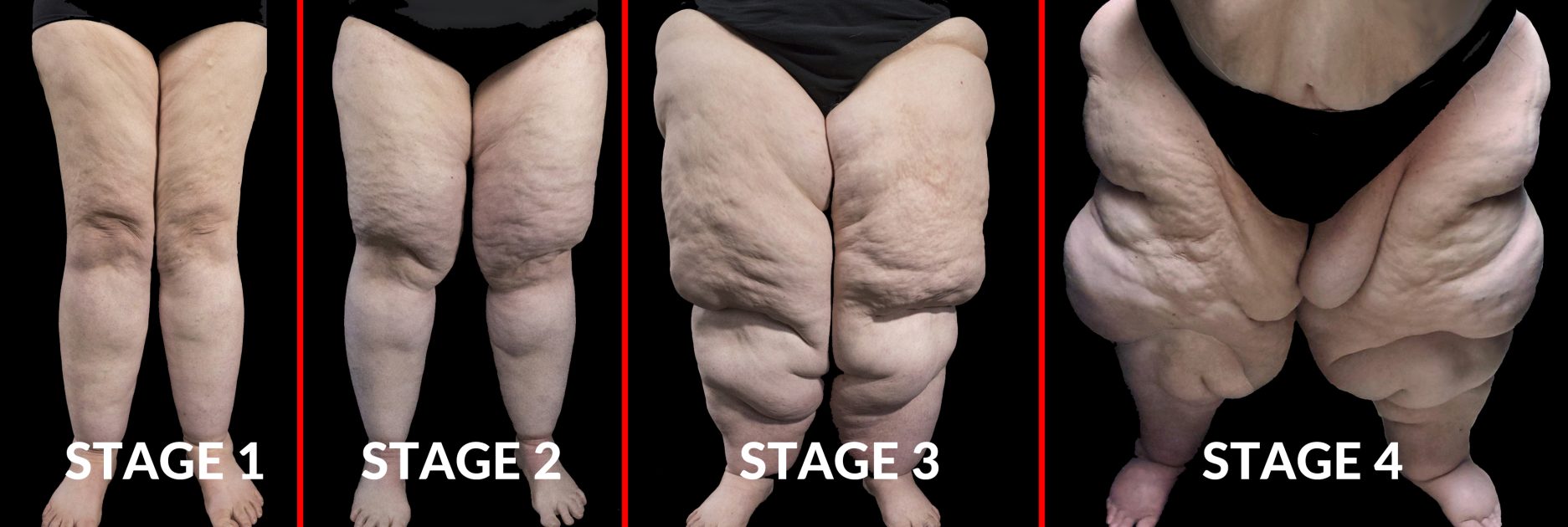Lipedema
 Lipedema is not a well-known subcutaneous fat storage disorder even though it is highly common. The reason it is not well-recognized is because the symptoms can present in many forms not known to medical professionals. Lipedema causes are not widely known. However, 60% female patients show a pattern of inheritance.
Lipedema is not a well-known subcutaneous fat storage disorder even though it is highly common. The reason it is not well-recognized is because the symptoms can present in many forms not known to medical professionals. Lipedema causes are not widely known. However, 60% female patients show a pattern of inheritance.
The pathologic physiologic mechanism behind lipedema is not fully known even if it is thought t be inherited. Plastic Surgery Institute of Atlanta (PSI), led by plastic surgeon Dr. Paul McCluskey, provides lipedema surgery to patients in Atlanta, Marietta, Georgia, and surrounding communities.
Possible Causes of Lipedema
Hormones
Hormones are thought to play a major role in lipedema since it almost only affects women. However, it is seen that men with hormonal imbalances are also affected by the disorder. Estrogen plays an important role in metabolizing fat.
Changes in estrogen receptors within the adipose tissues can cause changes in lipolysis activity. For instance, lipolysis will reduce with a decrease in alpha estrogen receptors and an increase in beta receptors. This will cause increased fat deposition.
Lipedema can be a result of estrogen receptor differences in the subcutaneous fat on the legs, arms, and buttocks. It is possible for the estrogen receptors to just have a decreased signal.
Impaired Lymphatics
Stanford University researchers found that patients with lipedema and lymphedema had increased levels of PF4 or platelet factor 4. PF4 is a marker of both lymphatic function and inflammation. It is released by the platelets in response to inflammatory substances and injury.
Several studies have also shown that patients with lipedema have impaired lymphatic function. Lymphatic impairment stimulates adipose tissues that results in an increase in fat deposits in the affected limbs.
These studies provide the evidence that lymphatic impairment is to be blamed for lipedema. It also explains the mechanism behind increase in fat accumulation in the legs and arms of women with the disorder.
Impaired Vascular Function
Vasculopathy or impaired vascular function is another possible explanation for the disorder. Microangiopathy is noticeable in histologic studies in early phases of the disorder. Increased vascularity is required by tissue expansion because of increased fat deposition.
Tissue hypoxia is caused by tissue expansion. Tissue hypoxia of adipocytes results in increased inflammatory markers, such as TNF-alpha, Tumor Necrosis Factor, and Interleukin 6 (IL-6). This also results in an increased secretion of VEGF.
Lymphatic circulation problem can also cause lipedema. Lymphatic fluid may witness an increase in collection of fat cells that are grown in the presence of chylomicrons. Lipedema can also be caused by an obstruction in the lymphatic capillaries. There are studies that show that there is poor uptake of lymph in early lipedema stages.
Neuropathy
Lipedema can also be the result of neuropathy. Increased fat accumulation and impaired lipolysis can be due to a decrease in sympathetic nerve function. Researchers have observed cutaneous hypothermia in patients with lipedema. Increase in vascular congestion was also found by some researchers in lipedema patients with reddened feet.
The Plastic Surgery Institute of Atlanta (PSI), led by cosmetic surgeon Dr. Paul McCluskey, receives patients from Atlanta, Marietta, Georgia, and nearby areas for safe and proven lipedema surgery.
Contact Marietta, Georgia Plastic Surgeon Dr. Paul McCluskey at the Plastic Surgery Institute of Atlanta for a Consultation
For more information on procedures and treatments offered by Plastic Surgeon, Dr. Paul McCluskey and the Plastic Surgery Institute of Atlanta, visit:
Serving patients in and around Marietta, Atlanta, Roswell, Sandy Springs, Alpharetta, Buckhead, Morningside/Lenox Park, Virginia-Highland, Candler Park, Midtown, Inman Park, Poncey-Highland, Ormewood Park, Georgia and other surrounding areas.




Book Now: (404) 255-3555